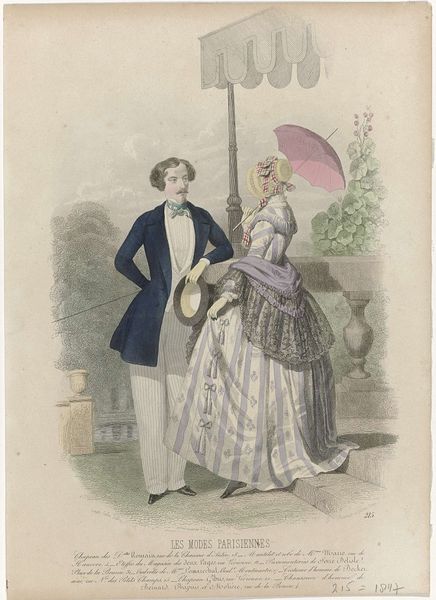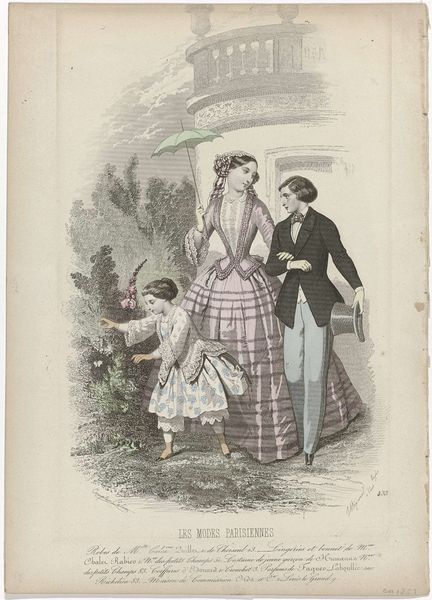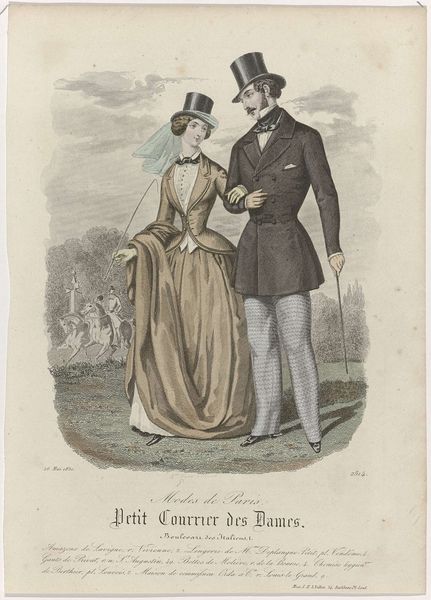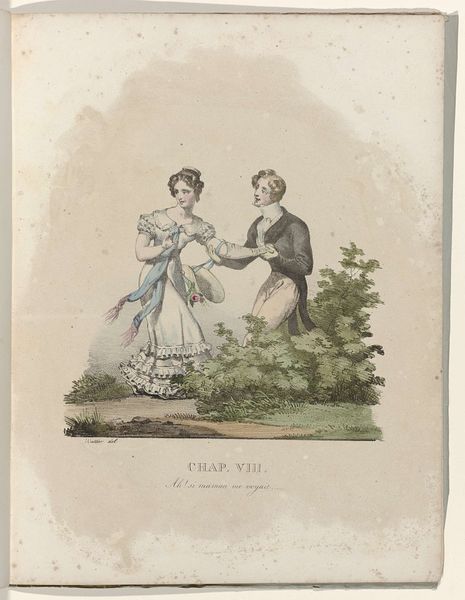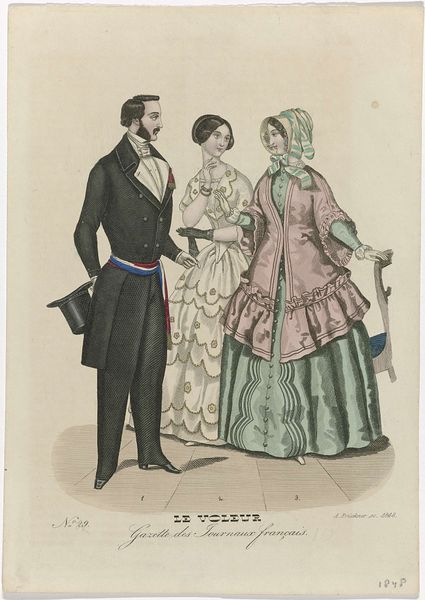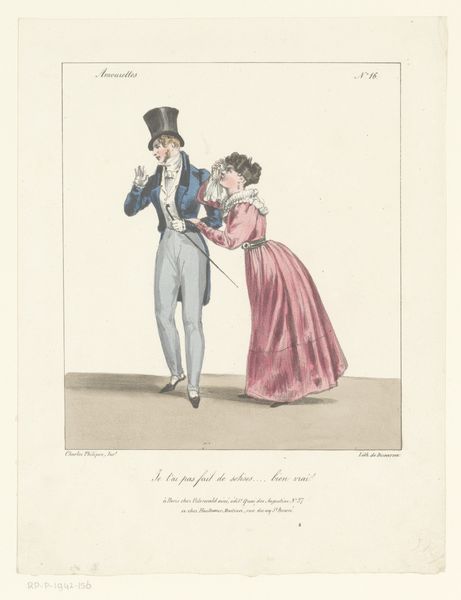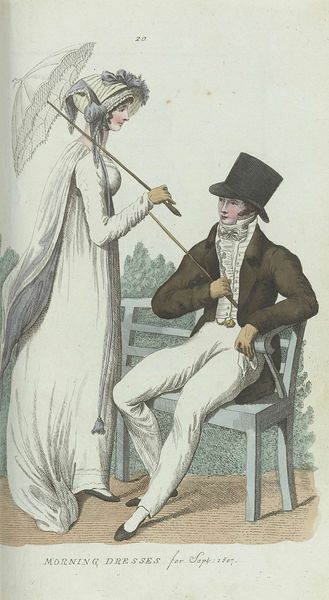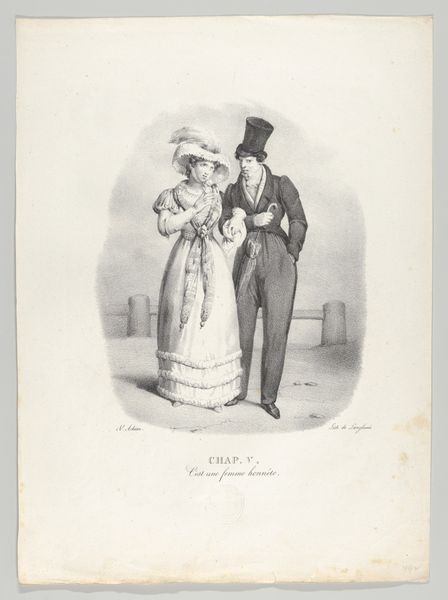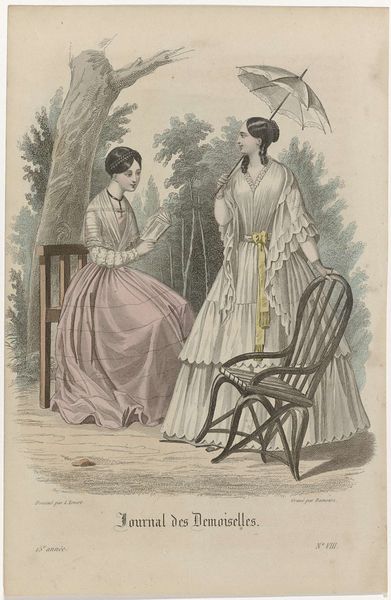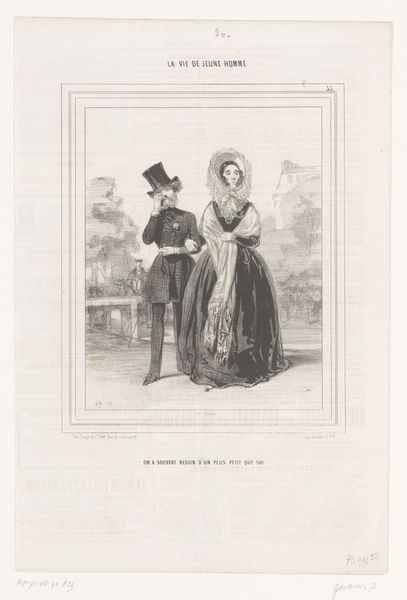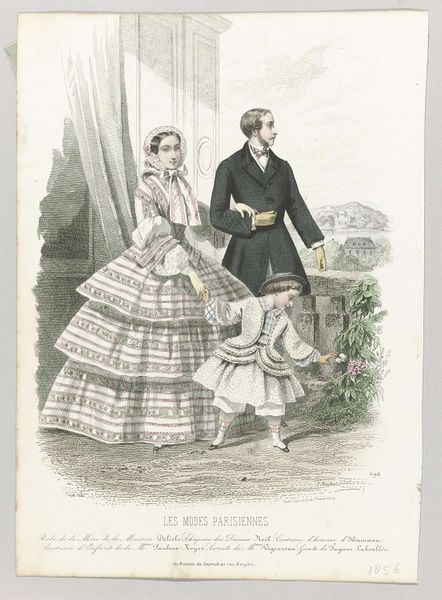
Les Modes Parisiennes 1846, No. 175 : Costume d'homme de Becker (...) 1846
0:00
0:00
montautdolerongabrielxavier
Rijksmuseum
mixed-media, print
#
portrait
#
mixed-media
# print
#
figuration
#
coloured pencil
#
romanticism
#
genre-painting
Dimensions: height 267 mm, width 193 mm
Copyright: Rijks Museum: Open Domain
Editor: So, this is "Les Modes Parisiennes 1846, No. 175 : Costume d'homme de Becker," from 1846, currently held at the Rijksmuseum. It appears to be a mixed-media print. I’m immediately struck by the… flatness, almost like a paper doll effect. What do you see in this piece from a formalist perspective? Curator: The lithographic lines, rendered with colored pencil, establish a compelling tension against the ostensible realism of the portrayed figures. Observe how the chromatic scale achieves depth through gradients of hue and saturation, particularly in the woman's gown, to build form through patterns of the applied texture. It avoids pure representation. Note also the carefully positioned background details – the distant horse, the laden basket– which work as compositional devices, guiding the eye within the picture plane and contrasting its geometry to their free placement in the composition. Editor: That's fascinating! The patterned fabric and the textures now jump out at me. The positioning you mentioned creates depth but not in a way that feels quite… real. Do you think the lack of realism is an aesthetic choice? Curator: It’s a critical engagement with mimetic representation. The artist eschews perfect imitation in favor of formal strategies – line, color, texture – which collectively construct an image that foregrounds its constructed nature. This piece uses realism’s semblance and bends the method of accurate replication in favor of aesthetic expression, to its visual, abstract character. Editor: So, it’s almost as if the ‘fashion plate’ aspect is a secondary function, and the primary focus is on the aesthetic interplay of shapes, lines, and colors. Curator: Precisely. It is less about accurately capturing dress, and more about how the various methods can represent its underlying aesthetics. Editor: I never would have considered that interpretation at first glance! Focusing on these components makes the entire picture come alive. Curator: Yes, by examining formal relations we can look past representational meaning in art.
Comments
No comments
Be the first to comment and join the conversation on the ultimate creative platform.
